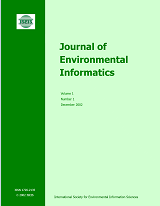doi:10.3808/jei.202400506
Copyright © 2024 ISEIS. All rights reserved
Development and Optimization of A Low-Pressure Microbubble Scrubber for Air Pollutants Removal Using CFD
Abstract
A microbubble scrubber is a hybrid type scrubber that combines the advantages of a general scrubber with the advantages of the microbubble. Microbubble which has generally under 50 μm diameter is one of the effective ways to remove air pollutants, like PM, NOx, and SOx. The low-pressure microbubble (LPMB) scrubber is a low-power, high-efficiency method that uses a blower to draw flue gas into the solution and generate microbubbles in the water by using low-pressure or negative pressure. The objective of this study was to enhance the removal efficiency of air pollutants in an LPMB scrubber by determining its optimal operating conditions for generating a large number of microbubbles. To achieve this, we developed a CFD model based on a pilot-scale LPMB scrubber and conducted case studies under different operating conditions using fluid flow analysis. The case study consisted of 12 cases according to the pressure difference (1,000, 3,000, 5,000, and 7,000 Pa) between the scrubber inlet and outlet and the initial water level (–0.2, 0, and +0.2 m). The simulation results showed that the optimal operating conditions were a pressure difference of 5,000 Pa and an initial water level of –0.2 m. The removal rates of PM, NOx, and SOx were 99.9, 92.6, and 99.0%, respectively when operating under the optimal operating conditions of the LPMB scrubber. The results suggest that the proposed optimal operating conditions can effectively enhance the removal efficiency of the LPMB scrubber.
Keywords: microbubble, low-pressure microbubble scrubber, removing air pollutants, CFD, fluid analysis
Supplementary Files:
Refbacks
- There are currently no refbacks.
